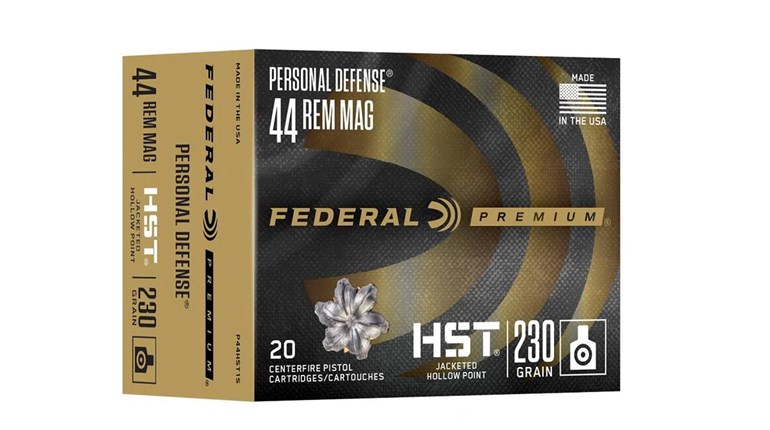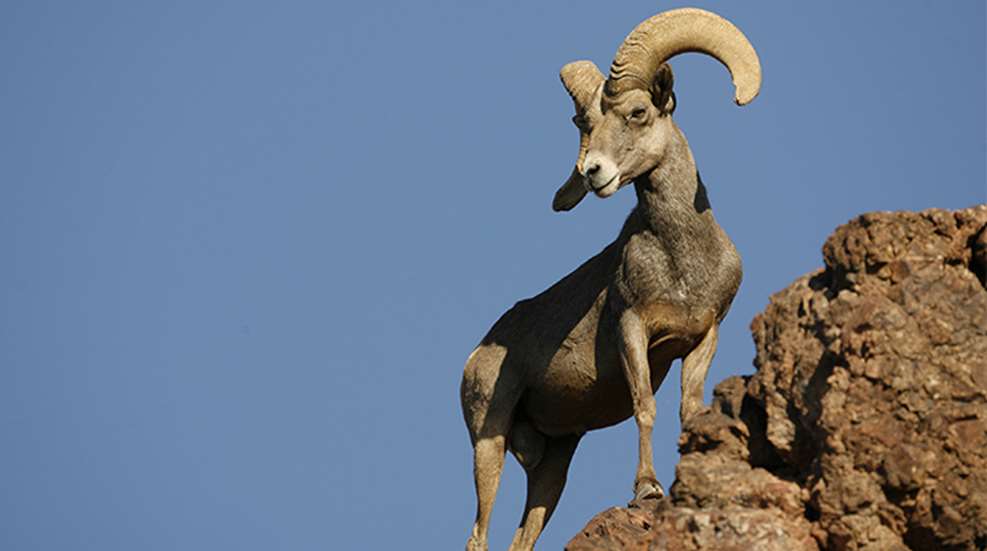
Even before boots hit the mountain, anyone who gets to hunt North America’s wild sheep is on a lucky streak. Just getting a permit is a big win, what with unicorn draw odds or paying the freight for an over-the-counter permit. Either way, fortune has smiled. Add mountaintop vistas and the satisfaction of doing something rare and difficult, and you’ve hit the jackpot. That especially pertains to me, as I’ll explain in a bit.
First, let’s consider my partner on a post-Labor Day outing for desert bighorns in far West Texas. Chris Metz is the CEO of Vista Outdoor, the biggest company in the outdoor-gear marketplace, the last big U.S. outdoor conglomerate standing since the demise of Remington Outdoor Corp. and downsizing of American Outdoor Brands. While I certainly don’t know what it’s like to be him, we can infer that Chris’s workday is about swimming with sharks. And so far as I could see, not a toothmark.
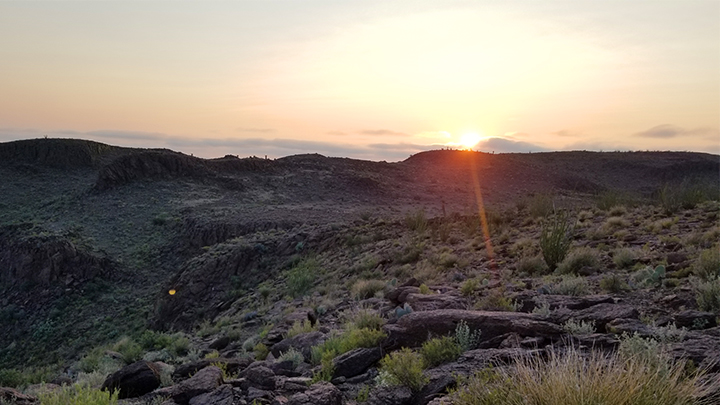
Not that it’s always easy. Early on, Chris had to make the tough decision to divest Vista’s majority position in Savage Arms, a move necessitated, he explained at the time, by the need to fortify other operating units, notably Federal Ammunition. Despite that transparency and logic, putting Savage on the block provoked a social-media troll hatch. Accusations of abandoning gun owners ripped forth, somehow overlooking the fact that Chris’s stated purpose was to grow the world’s biggest ammunition maker. Savage went to settlement 14 months later, hardly a politically correct fire sale, and by all appearances Federal is indeed growing bigger and better according to plan.
Just weeks after our hunt, headlines announced Vista’s purchase of Remington Ammunition along with Remington trademarks and other intellectual property. Although the effect is just now being felt in the marketplace, it amounts to a seismic shakeup in the ammo industry. Like many of us, Chris got on the phone while in the field, but not as often or for as long as you’d think given what he had cooking. Yet he was ever his easygoing, personable self, and by all measures, fully focused on the hunt.
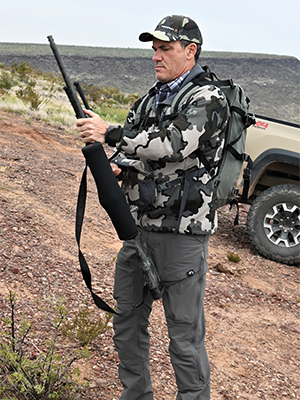
Clearly, Mr. Metz can handle himself outside the boardroom. Put him in game country with a rifle in hand and he steps neatly into predator mode, gladly carving time from his hectic schedule to slip away for a rare chance to hunt desert sheep. All summer he'd intensified his exercise routine, doubling down on the cardio, upping squats and lunges to build leg strength.
A seasoned elk and deer hunter, this wasn’t Chris’s first go at wild sheep. That came on a tough British Columbia hunt from which he returned empty-handed. “I consider sheep hunting the ultimate, but you hear all sorts of stories about it. Coming in, our guys from High West Outfitters, founder Jim Breck Bean and chief guide Jasper Klein, told me about an old, old, old ram they’d seen in years past and had spotted again the day before. We would start right there. But then we’ve all heard about animals seen yesterday." Metz had to recap the action because I missed out after falling ill at the airport. While I was delayed back in Virginia, his trip went smoothly, and a few hours after arriving in Texas, Chris was in pursuit of the elder ram.
“The location was way back in the backcountry, two hours farther after we arrived at the ranch,” Chris said. “It was beautiful country, and as we approached the spot, we set up to glass and immediately saw sheep up on a hill at about 1,500 yards. There were 15, 20 sheep, mostly ewes, but also a couple shooter rams. Glassing turned up a few more ewe-ram groups, and then finally the old guy emerged. Jim Breck told me, ‘That’s the one. I’m guessing that ram’s about 13 years old, the oldest sheep we have. Great mass, broomed on both sides.’
“He was tucked up in a draw, and even if it wasn’t so far, we weren’t lined up for a shot,” Metz said. “So Jim Breck said ‘we’re moving’, and up we went, I’m guessing 800 vertical feet, to the point where my heart was pounding. It wasn't nerves, it was just trying to keep up with my guide.
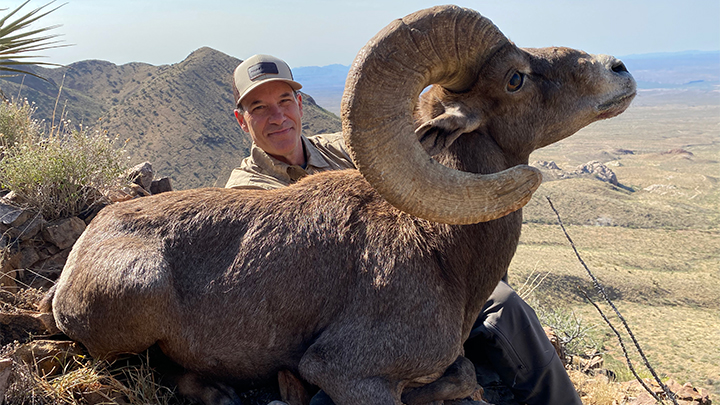
“When we re-spotted them, the sheep were around 500 yards, and we went for it and moved in closer—very quietly, closer and closer until we were sitting in a pile of rocks at 150. Jim Breck asked me, ‘Can you see him? How do you feel?’
“I said, ‘I can see him perfectly, and I feel great!’ So we just watched for a few minutes,” said Chris. “It was a beautiful scene. Moving along, the ram gave me a broadside and then a quartering-to angle. I told Jim I was ready, and then shot from a sitting position using a backpack for a rest. My load, a Federal Premium 6.5mm-284 Norma with a 130-grain Terminal Ascent bullet, hit hard. Right down, dropped the ram in his tracks.
“What an outstanding hunt! That ram was so, so old! Boy, his mass, maybe two years broomed off. He was everything I hoped for. He was past mature, ready to be harvested. Incredibly, there was another ram in the group that, if my ram hadn’t been so old, I would have tried for.”
Reflecting on the experience, Metz told me, “My favorite for sentimental reasons is elk hunting with my sons, and every fall we have a ‘boys' hunt’ getaway for elk and I just love that. But, yes, my ultimate goal is to collect the grand slam of North American sheep. I am truly smitten with sheep hunting.”
However, there was a second act when Metz set his sights on the area’s abundant aoudad, the introduced sheep species that has become a major drawing card in Texas hunting. The experience is akin to the challenge of desert bighorns, but for multiple reasons is more affordable and accessible. The horns are different from the full-curls we seek on native sheep, but are impressive and coveted nonetheless. Aoudad make for a great equalizer, as Chris learned stalking them for the first time.
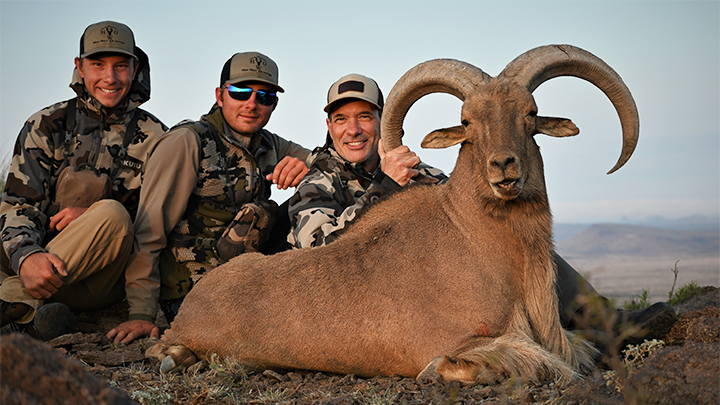
There were 30 to 40 spread out atop a high ridge and sorting out the biggest ram wasn’t easy. The dominant male was in a breeding frenzy as the sun set, ratcheting up the difficulty. My partner had to contort amongst the rocks into what looked like a painful semi-prone posture and was doing his best to track the energetic ram. “It was awkward—definitely,” admitted Chris. “I wasn’t liking that position on such an active animal. It wasn’t comfortable, but I just made myself get comfortable to fire the shot.” And a heckuva a poke it was—300-plus yards—causing the husky aoudad ram to drop on the spot just like Chris’s bighorn had dropped.
As noted, I was delayed after getting sick standing in line at the airport. With COVID sensitivity running at a fever pitch and EMTs gathered around, the airline refused to rebook me until the following day, and only then if I could present a doctor’s clearance. Thankfully that didn’t deter Chris’s hunt, and it was encouraging when news came through later that he’d scored on a ram that was huge and old as the hills. It was powerful motivation to get me on the plane, and the following morning’s check-in and boarding were routine. By midday, I was in a rental car leaving El Paso, on the way to Texas sheep country.
Luckily the logistics were fairly simple, since these hunts are mostly conducted from a pickup rather than backpacking or on horseback. The 24-hour delay seemed inconsequential as Jasper led me to a homestead off the highway, where I changed my shirt and boots and readied my gear. Midafternoon hit like a blast furnace, with the mercury nearing 100 degrees, though the heat had no effect on my rifle’s zero. The Federal Premium Terminal Ascents from my Nosler M48 Mountain Carbon Rifle pocked a distant L-shaped rock with two consecutive hits, continuing what I’d seen practicing.
We quickly spotted sheep on the ranch for which my permit was issued, many miles from where Chris had taken his old-timer. A couple rams merited spotting-scope inspection, but were deemed not quite what we wanted. These sheep reminded me of the Rocky Mountain bighorns I’d hunted in Colorado and Wyoming, with dark torsos offset by buff rump patches, and horns whose blocky mass made it hard to judge their length.
Jim Breck decided we’d hike up a ridge near the property boundary and have a look over the other side, and it didn’t take long to see these mountains were every bit as vertical as sheep mountains anywhere. I had to push to try keeping up with Jim and Chris, but don’t think it was lingering illness from the previous day or because I wasn’t in decent shape. It felt good to walk and that I was moving well, but those guys were simply a lot faster powering up the rocky incline.
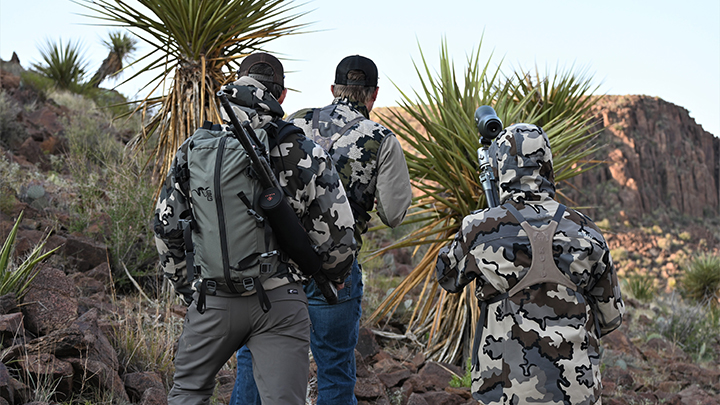
On top, the wind stirred, and as we glassed it started gusting. Rising to leave 20 minutes later, Jim pointed out dark rain clouds to the west; weather, he said, was headed our way. Indeed, the temperature was crashing. Upon returning to the truck, what had been a scorcher of a day was now a fierce storm. Temps had nose-dived a good 30 degrees and the wind snatched our caps. In minutes, the first raindrops raked the windshield and the sky darkened. Though the plan had been to head to another glassing overlook, Jim said, “I don’t know … this is getting bad fast.” He called Jasper’s truck, said we’d better head to town and we beat a hasty exit.
I will never know how Jim Breck spotted the day’s final band of sheep—chalk it up to professional sixth sense. They were across a wide chasm, spread out laterally along a boulder-strewn sidehill. We jumped out into the wind and rain and trained our optics on the sheep. Despite difficult glassing, this time the decision was easy. On the left flank, a no-doubt boss ram grazed between the rocks, and so Jasper and I lit out in earnest pursuit. Dropping into the bottom made for easy walking and then as we climbed out of it, the wind smacked us, funneling around the mountain, rushing left to right. Fortunately the rain fell only in spurts.
At 350 yards, with the sheep getting antsy, Jasper said we needed to settle in for a shot. I got prone with the rifle resting on my pack and it felt like I was shooting nearly straight uphill. The ram was walking, mixing with others, and so I had to wait. When a lane finally cleared I held into the wind and fired. However the ram didn’t react, and Jasper said, “I don’t know where you hit.” It didn’t sound good.
The ram was walking again, milling through his ewes and the rock piles, so again I waited. My scope was fogging from the rain and my excitement as Jasper updated the range to 360. It seemed like forever before a shot presented, and I had to take a couple seconds to dope it before pressing the Nosler’s trigger. Again the guide said, “I don’t know where you hit.”
But the ram was gone from view, and quickly Jasper added, “Wait … I think you got him. He just took a dive.” Neither of us could spot the beast after that, so we stayed ready in case he stepped out from behind the boulders. When that didn’t happen, we hiked up the craggy hill and found him laid out at the edge of a cliff. While quite different from my other sheep hunts, the stalk-and-kill sequence was as thrilling as any of them. Though not as ancient as Chris’s ram, its broomed horns were incredibly thick, so much so it gave the appearance of a tight curl, though that clearly wasn’t the case. When it came to trophy characteristics, this ram had it all. After an eventful and troubling 36 hours, luck came and sat on my shoulder.
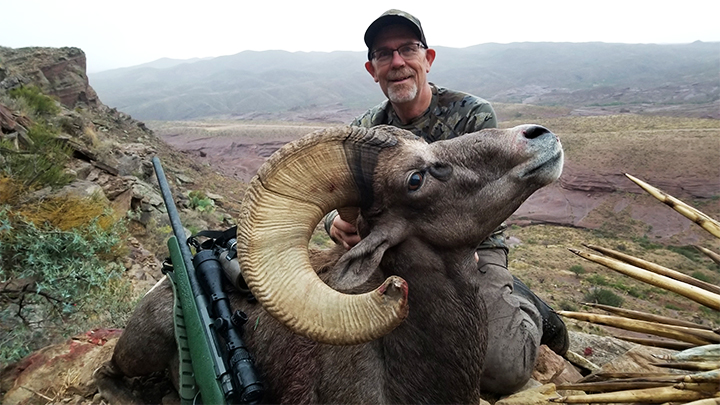
It so happens that this ram represented a milestone in my life as a hunter, completion of what some call a “grand slam,” when one has taken each of the four species of North American wild sheep. (For more, click here.)
I won’t make any grand claims but will confess that I’m a long way from the kid who always wanted to go rabbit and squirrel hunting and hoped one day to shoot one of the ringneck pheasants that lived on our farm. Whatever the achievement, it’s all due to my long employment with NRA Publications, and credit for that goes to NRA members who faithfully support our Association. So, while I’m the one with the horns and the memories, you folks deserve the credit. That’s the real luck I’ve had as a sheep hunter.
Federal’s decision in the late 1980s to load custom bullets in factory ammo changed our sport forever. The primary benefits are enhanced accuracy, flatter trajectory and more reliable knockdown, all of which help increase the rate of quick, clean kills and recovered game. When it was an overnight sensation, Federal capitalized by extending custom-bullet offerings and has continued to revamp the mix ever since.

The newest and foremost example is Terminal Ascent (TA), a Federal invention with the slinky profile of the new ultra-long-range class, plus the internal structure of stout controlled-expansion sluggers. Inside, there’s a lead core bonded to a solid copper shank, then a tough jacket is formed over the core. The surface is improved by exclusive AccuChannel stress-relief grooves cut into the shank, which allow the bullets to conform to the micro-surface of the bore. The resulting mirror fit decreases fouling and wear, but more importantly ensures these loads max the accuracy potential of almost any rifle. Such grooves are now common on monolithic bullets, but Federal updated the concept by angling the rear face in order to reduce drag. Doing so has allowed the company to use fewer grooves—either one or two depending on caliber—and that ups the bullets’ ballistic coefficients (BC).
As dictated by the law of supply and demand, few hunters ever get to hunt desert bighorns. Their populations have always been low, scattered as they are in arid southwestern mountains. Around 200 general U.S. draw tags are awarded yearly, supplemented by auction and raffle opportunities, plus pricey landowner permits in Texas and a handful of Mexican states.
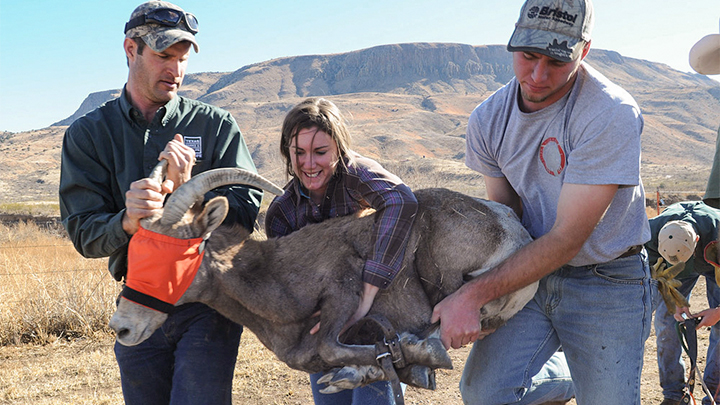
More good news comes from the bustling population of introduced aoudad. This native of north Africa was brought to Texas around 1950, and what a lucky development for all American hunters interested in hunting wild sheep. Heavy-bodied aoudad, with their dramatic, downswept horns and fringed chest and front legs, make a stunning trophy. This breed has thrived in its new home turf, and free-range herds are growing throughout West Texas and southeastern New Mexico. Not just limited to mountainous terrain, aoudad have spread across the landscape to the point where some ranchers consider them a nuisance, a factor that’s helped to keep hunts affordable. The pursuit is sporty, seasons are generous and the Trans-Pecos winters mild. Hunters increasingly are taking advantage of what amounts to one of the best buys in outfitted big-game hunting.












